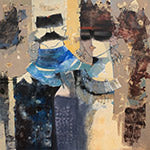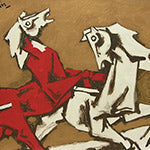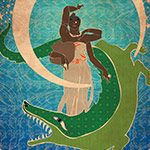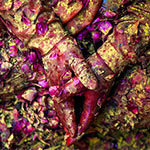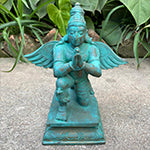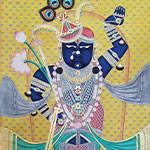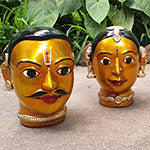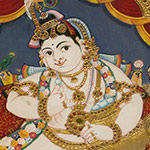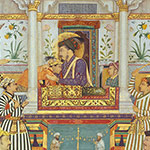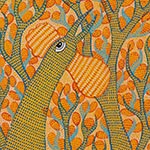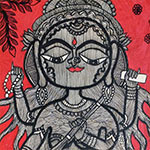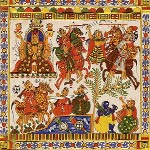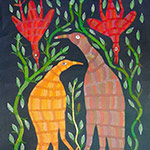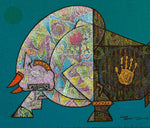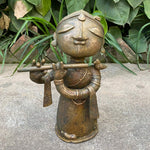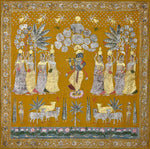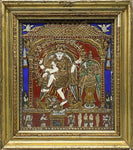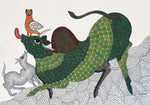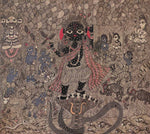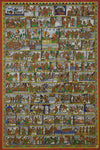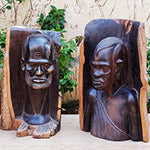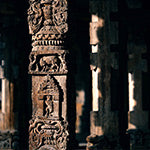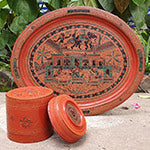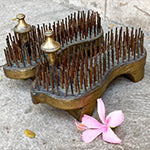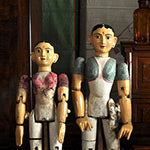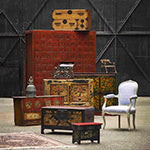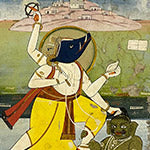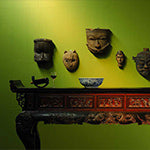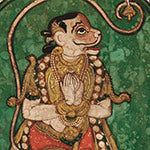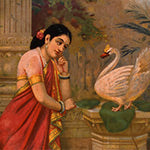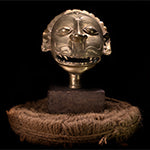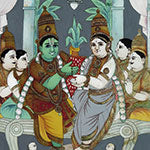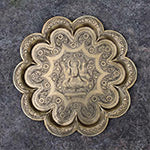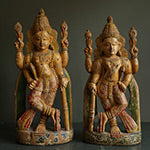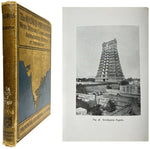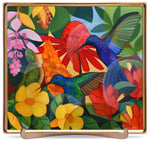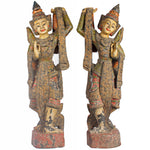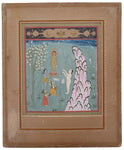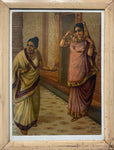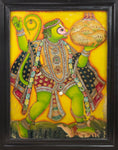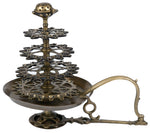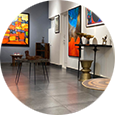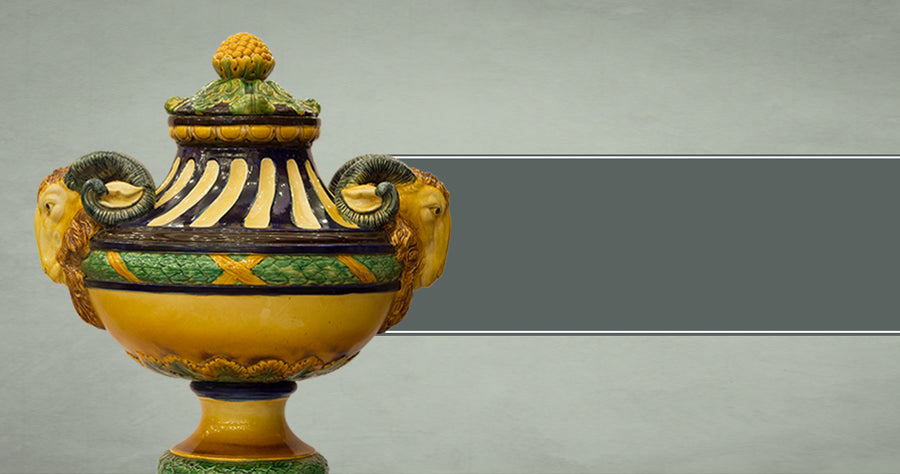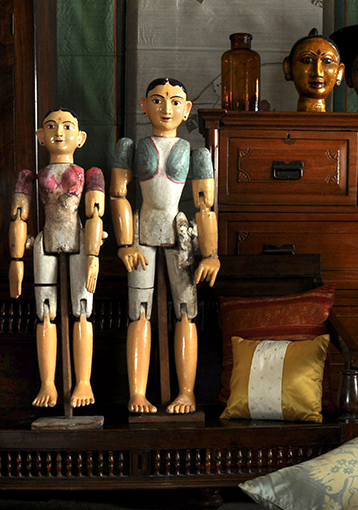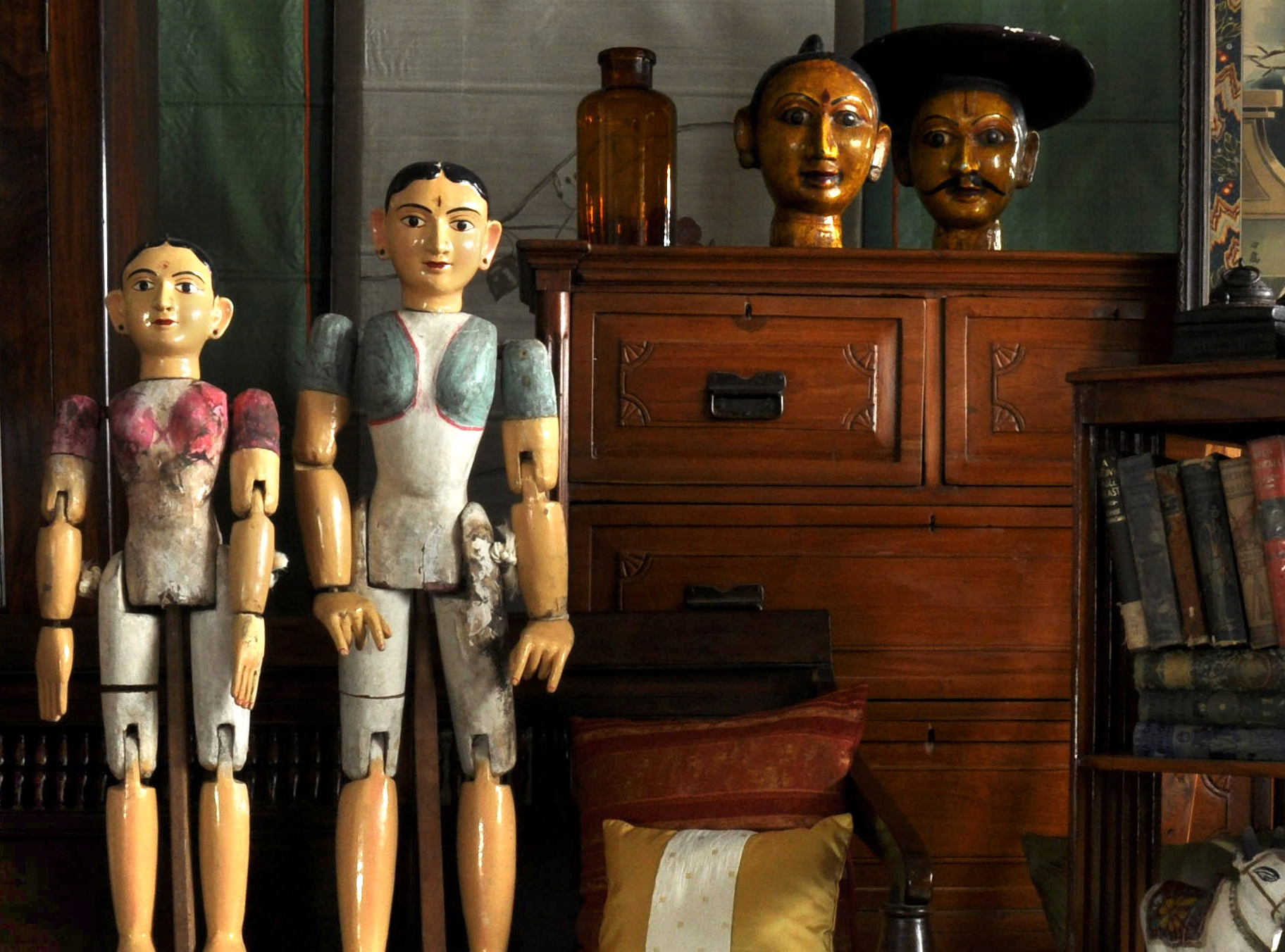Art of Consequence - A Photo Essay on the Legendary, Non-Conforming Artist Jamini Roy
Creators And CollectorsPadma Bhushan Jamini Roy, popularly regarded as the father of Indian Modernism, is one of the prestigious ‘Navaratnas’ as declared by the Indian government. The nine gems of Indian art, known as ‘Navaratnas’ include Jamini Roy, Rabindranath Tagore, Amrita Sher-Gil, Raja Ravi Varma and others whose art is considered a national treasure - making it illegal to sell their work outside the country. This photo essay is a leeway into the life story of Jamini Roy, whose art made a case for India’s original identity amid overwhelming western influences during colonial rule in the 20th century.

Born in 1887, in West Bengal, Jamini Roy grew up in an idyllic village called Beliatore, rich with authentic culture and abundant folklore. Jaminibabu, as he was fondly called, was raised in a well-to-do family. His father had retired from government services and dedicated his remaining life to art. Following in the lines of his father's passion, Jamini Roy too developed an interest in art. To substantiate his knack for painting, 16-year-old Jamini Roy was sent to Government College of Art, Calcutta in 1903.
 The intricate Terracotta friezes on the temples of Bankura district that Jamini Roy grew up in, were a long-lasting influence throughout his career (Source: Wikimedia Commons)
The intricate Terracotta friezes on the temples of Bankura district that Jamini Roy grew up in, were a long-lasting influence throughout his career (Source: Wikimedia Commons)
The Government College of Art in the colonial period of the 1900s was standardized with a strict western curriculum. Under the tutelage of Abanindranath Tagore, an established modern art legend, Jamini Roy thoroughly honed his skill in post-impressionism. After 5 years at the Government College of Art, he graduated in 1908 and began commissioned work as a portrait painter. He excelled at creating modernist portraits, which were a peaking trend at the time, gaining him professional success followed by economic stability. Though most of his learning was predominantly under unfamiliar western and oriental references, Jamini Roy’s paintings showed his sensibility in absorbing the essence of self-expressiveness in those international styles. The early art of Jamini Roy, laden with characteristic European blues, yellows and mosaic-hues, was a direct consequence of his art college training.
 Top - Landscape with Pond (With Landscape on Reverse) by Jamini Roy, tempera on card; Bottom - Van Gogh by Jamini Roy, ca. 1910, tempera on board (Source: Artsy)
Top - Landscape with Pond (With Landscape on Reverse) by Jamini Roy, tempera on card; Bottom - Van Gogh by Jamini Roy, ca. 1910, tempera on board (Source: Artsy)
The 1920s was a politically charged decade, as the Indian independence movement found its footing under the pioneering influence of Mahatma Gandhi. With the looming nationalism, Jamini Roy grew increasingly discontent with the western influences in his art. Gradually, he started experimenting with rather raw Indian sensibilities and painted an extensive series on the Santhal tribe native to West Bengal. The Santhal paintings were a unique revelation of his conflict between rigid western training and burgeoning Indian conviction.
 Untitled (Santhal Woman Standing in a Stream) by Jamini Roy, tempera on card (Source: Christie's)
Untitled (Santhal Woman Standing in a Stream) by Jamini Roy, tempera on card (Source: Christie's)
 Santhal painting by Jamini Roy (Source: TOI)
Santhal painting by Jamini Roy (Source: TOI)
In the mid-1920s, he found his long-awaited muse in the ‘Pattas’ sold outside the Kalighat temple in South Calcutta. He found Patta art to be empowering, with its authentic Indian style and simple illustrations that elicited bare emotions. Kalighat paintings were prominent for their plain backdrops that call attention to the bold main figures. Steering clear of overburdened backdrops, Jamini Roy assimilated this ‘flat-style’ of painting in his art which typically zoomed in on the main figures or featured delicately designed backgrounds.
 Kalighat paintings from the 19th century (Source V&A Museum)
Kalighat paintings from the 19th century (Source V&A Museum)
Swayed by the simplicity that could produce such strong influences, Jamini Roy developed his characteristic style of art, rendering his main figures with broadly swept eyes that are substantial but delicate. Depicting his subjects with captivating eyes, petite lips and bold outlines is unique to his style. The eternal allure of his art is such, that even today, it swiftly captures one’s attention without their knowing.
 Jamini Roy’s iconic painting, Untitled (Three Women), gouache on card (Source: Christie’s)
Jamini Roy’s iconic painting, Untitled (Three Women), gouache on card (Source: Christie’s)
In 1929, Jamini Roy’s first exhibition after his transition to neo-folk art was sponsored by Mukul Dey, the first Indian principal of the Government School of Art in West Bengal. He had an eye for Jamini Roy’s skill and nuance in his seemingly simpler style of painting. Being an artist himself, Mukul had travelled internationally to give lectures on Indian art. He understood the rave for authentic Indian art which was considered refreshingly original in the international art dynamic.
 Jamini Roy's paintings depicting his trademark style (Sources: Artnet/Dhoomimal Gallery/Saffronart)
Jamini Roy's paintings depicting his trademark style (Sources: Artnet/Dhoomimal Gallery/Saffronart)
Through the next few decades, Jamini Roy came into his own with a distinguishable style. He indulged in the neo-folk interpretations of several subjects from Hinduism, Christianity, folklore, domestic animals and European scenes. He gained international glory with several exhibitions of his art across the world including New York and London.
 Untitled (Ganesh Janani), gouache on woven bamboo mat with linen border (Source: Christie’s)
Untitled (Ganesh Janani), gouache on woven bamboo mat with linen border (Source: Christie’s)
In the 1950s, Jamini Roy established a studio in quieter North Calcutta, best suited for his minimal, non-materialistic lifestyle. In a book on Jamini Roy by Sandip Sarkar, it is quoted that Rabindranath Tagore visited an exhibition at his Bagbazar house. It also mentions that Jamini Roy first met Rabindranath Tagore in his 20s, ‘on a magical evening in Allahabad, while he was so starstruck that he felt it was Jesus standing outside the closed door’. Jamini Roy was also visited by several radical personalities and friends like John Irwin, Bishnu Dey, Tarasankar Bandyopadhyay and Satyendra Nath Bose.
 Portrait of Tagore by Jamini Roy, tempera on card (Source: Artland)
Portrait of Tagore by Jamini Roy, tempera on card (Source: Artland)
Jamini Roy was disillusioned with European practices and reinterpreted several age-old traditional techniques in his paintings, establishing their relevance in modern art. Instead of canvas, he mostly painted on Pattas made of fabric, woven bamboo frames, mats, and wood coated with lime. Rejecting the factory-made paints, he used a basic colour palette made of earth tones derived from mud, chalk powder, flowers and other local sources. Using these organic paints, Jamini Roy formed the base colours of Indian red, yellow ochre, cadmium green, vermillion, grey, blue and white that appear in his artworks.
 Untitled (Woman in Blue; Woman in Green) by Jamini Roy, ca. mid-1940s, tempera on card (Source: Christie’s)
Untitled (Woman in Blue; Woman in Green) by Jamini Roy, ca. mid-1940s, tempera on card (Source: Christie’s)
He was predominantly influenced by simple, mundane objects and events as he observed an immense stretch of unnoticed sentiments in them. His aspiration wasn’t for art to be an elite privilege, but the grand simulation of life that occurs every day - through the innocence in the features of a kid’s toy or the longing around a cash box.
 Cash box by Jamini Roy, ca. 1950, tempera on wooden box (Source: Artnet)
Cash box by Jamini Roy, ca. 1950, tempera on wooden box (Source: Artnet)
Because he lived through politically tense times of World War II taking place in tandem with the Indian Independence struggle, Jamini Roy’s art was inevitably inferred with political connotations. His strong shift back into authentic Indian influences and techniques against severe colonial standards, his inclusive art highlighting marginal tribes and mythological references from multiple religions, and his ideology of selling art at affordable prices, did irk a significant set of conservatives. Jamini Roy countered both fame and blame with his art, that continued to be non-conforming and eventually carved a niche for Indian modern art.
 Untitled (Tagore and Gandhi) by Jamini Roy, tempera on board (Source: Artnet)
Untitled (Tagore and Gandhi) by Jamini Roy, tempera on board (Source: Artnet)
Jamini Roy’s art preserves his unbendable artistic integrity – the courage of much consequence to any artist whose art goes beyond a matter of self-absorption and continues to breed brave new thoughts throughout the generations it outlives.


